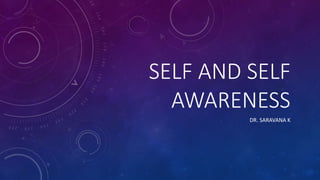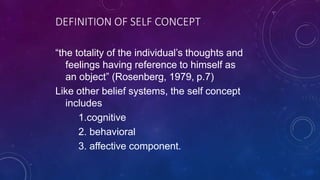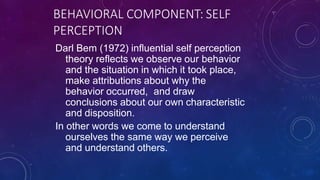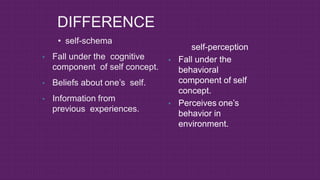The document discusses self-awareness and the development of self-concept. It notes that some non-human primates like chimpanzees show a primitive sense of self through experiments using mirrors. Infants begin recognizing themselves in mirrors around 18 months as their understanding of self grows. By age 6, children can describe traits and understand basic emotions. The cognitive, behavioral, and affective components of self-concept are explored along with influences like social comparison and cognitive dissonance in shaping one's understanding of self.


















